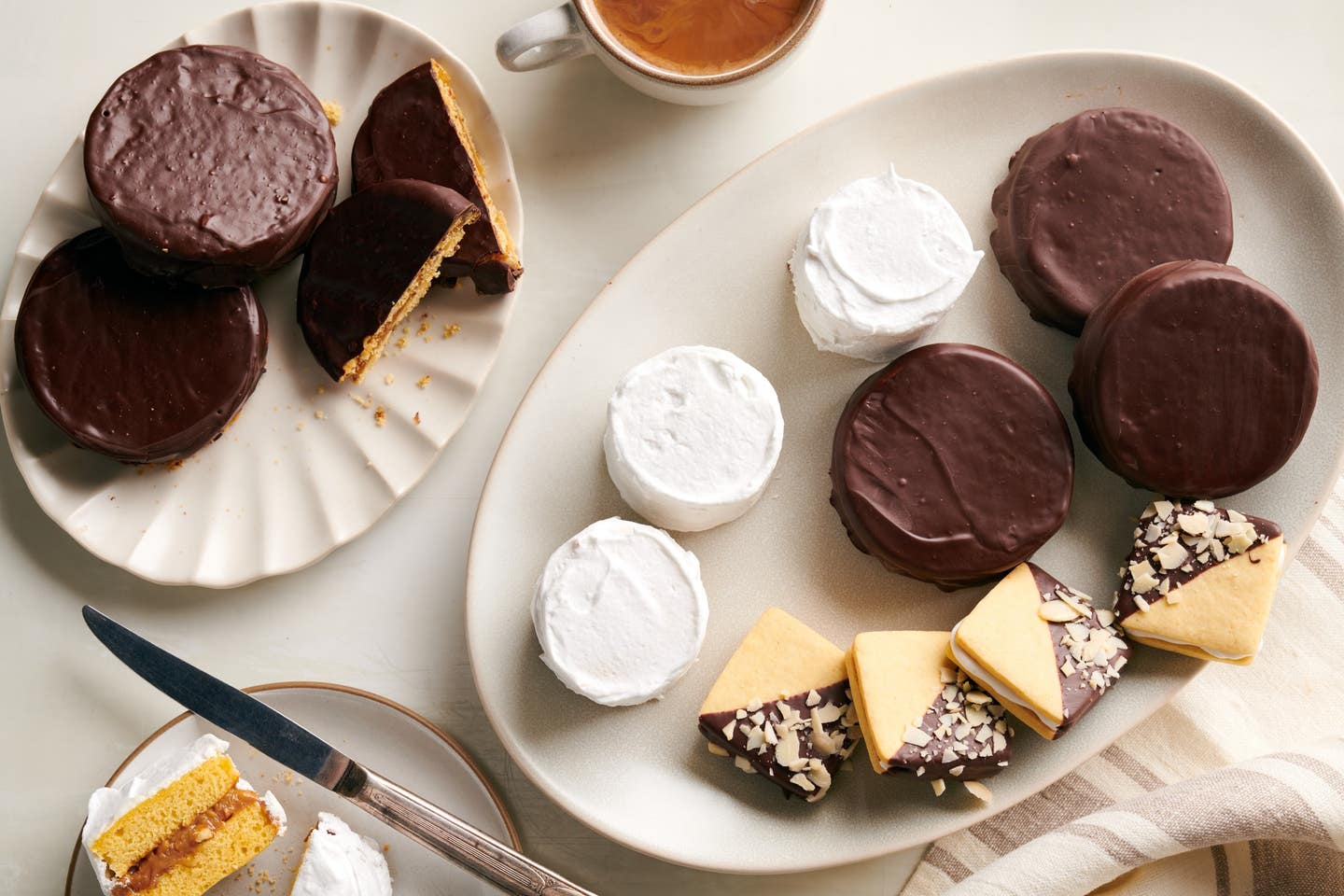
On Argentina’s North Atlantic Coast, a City Obsessed With Sugar and Nostalgia
In a sea of sweets, Mar del Plata’s alfajores reign supreme.
When the wind sails over the ocean just right, the city of Mar del Plata smells like sugar melting in a pan of salted butter. Throughout this oversized beach town on Argentina’s Northern coast, the promise of something sweet wafts out of cafés, ice cream shops and bakeries, mixing with the heavy saltwater breeze. Churros crunch, crackle, and soil laps with sugary crumbs; chocolate-coated cannoli cradle ice cream centers; and borrachitos—rum- and syrup-soaked brioche—offer the perfect midday pick-me-up. But atop this altar of sugar, one sweet reigns supreme: the alfajor.
“Alfajores are the essential Mar del Plata souvenir,” shouts Cristina Colacci over a loudly grinding conveyor belt spitting dozens of blonde cookies into an oven. “If you don’t go home with a box of alfajores, were you even here?”

Colacci is the matriarch of Trufles, a family-run factory that has made nothing but alfajores for the past six decades. Much of the production is still done by hand: Each day, the Trufles crew sandwiches hundreds upon hundreds of delicate butter cookies around a dulce de leche and almond filling, then dips them in a bowl of meringue, smoothing each one down with a butter knife. “There isn’t a machine that can do this,” Colacci explains. “Even if you visit the factory of a giant brand, there is a line of twenty people whose job is to coat alfajores with meringue.”
This alfajor glaseado is more frequently referred to as a marplatense—an unequivocal nod to the pastry’s origin, but also an attitude that envelops the city. At the turn of the 19th century, Mar del Plata was founded as a summer getaway for the country’s elite who built opulent oceanside estates and a long boardwalk modeled after European beach cities. As Argentina’s working and middle classes grew, Mar del Plata became an aspiration—a dreamy getaway to forget the reality of the big city and treat oneself to the carefree life along the Atlantic. The sentiment still rings true there today.
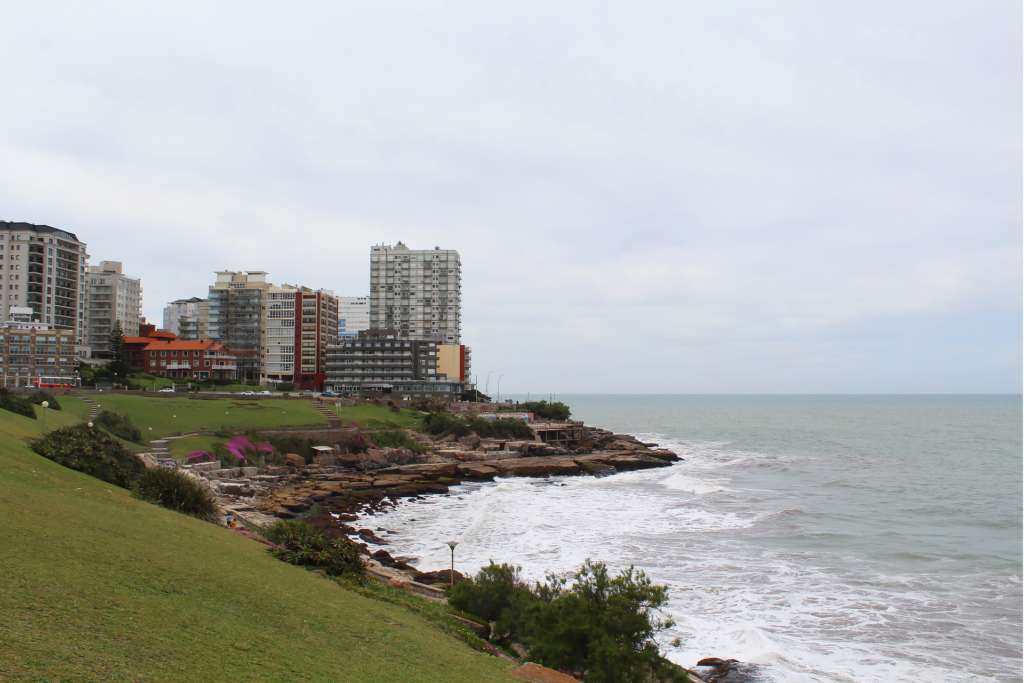
Starting in the 1950s, the masses began to descend each summer and kept coming. Developers built hotels, theaters, casinos, and, most importantly, alfajor factories. A handful of savvy local businesses capitalized on the country’s budding obsession and built cookie empires. In 1969, Havanna, the company credited with popularizing Mar del Plata’s alfajores, cemented themselves as alfajor royalty and constructed the city’s tallest skyscraper. Forty floors up, their logo still sits at the top of the skyline, always watching over the city.
In spite of years of industrialization, Mar del Plata’s artisan alfajor producers have remained resilient. In fact, these bakeries are so numerous that they inspire fanatical Instagram accounts like crime reporter-turned-alfajor historian Mariano Lopez’ Alfajores Marplatenses, where he records the minutiae that makes each baker unique, from the integrity of a cookie’s crumble to its height-to-filling ratio.
On my last trip I spent five days eating as many alfajores as I could. Every Instagram story that I posted elicited responses of pure delight, often from complete strangers recommending their own favorites. “Son como los que se hacían antes,” everyone said: They are like the ones from back in the day.
“Everyone always laughs when they see this,” Susana Araya warns me before aiming a hair dryer at a sheet of alfajores. She uses the styling tool to blow excess chocolate off the cookies to create her alfajores' signature mosaic texture. The baker is working alone this afternoon, dipping, drying, wrapping, and labeling hundreds of alfajores while her mother, Sylvie Chedeville, holds down the shop. “This is nothing,” Araya explains. “We used to write out each flavor by hand and pick and dry wildflowers to tie onto every single one.”
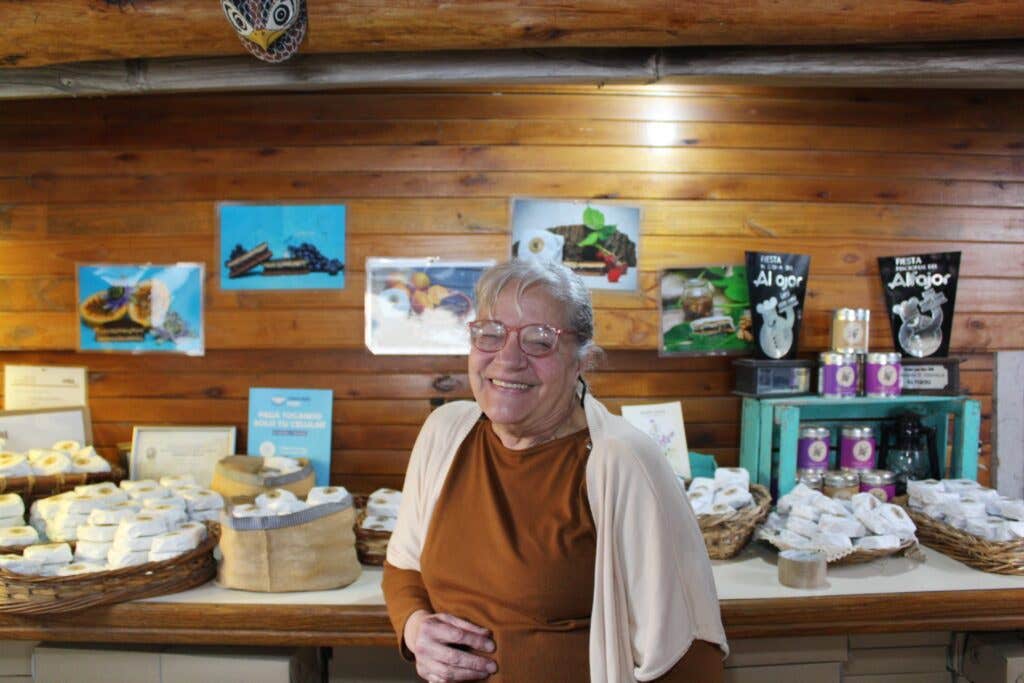
Chedeville moved from Buenos Aires to the coast in the 1980s. She initially sold pastries to local restaurants but the way her friends reacted to her alfajores convinced her and her daughter to turn their home kitchen into a full-time factory. So the women opened up shop as Armandine D’ozouville (named after Chedeville’s grandmother) selling six different flavors. Twenty years later, their selection has ballooned to a whopping 34 and counting.
“An idea will just pop into my head and I can’t stop thinking about it until we have the final recipe,” Chedeville explains while walking me through a mental checklist of her flavors. Rum and raisins, pulpy orange marmalade and almonds, fig jam with walnuts, coconut and white chocolate, and—my favorite—sambayón, a classic dulce de leche injected with a heavy hand of cognac.
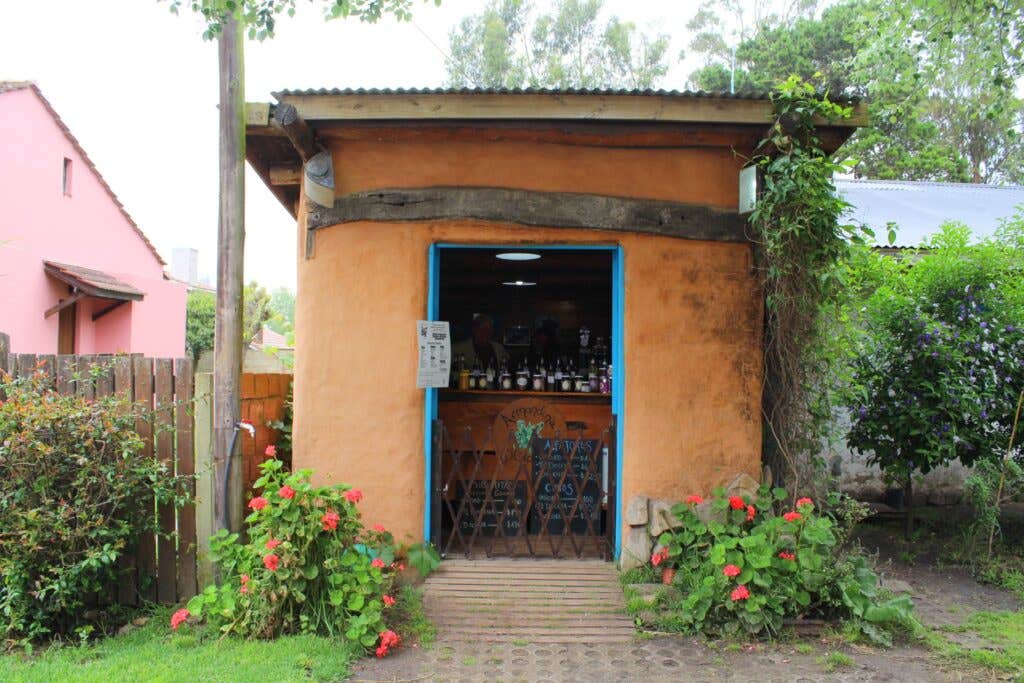
The little shop is built into Chedeville’s home in Atlantida, a wooded suburb of Mar del Plata. She regularly attracts visitors who have heard about her through word-of-mouth, sometimes coming from as far away as Morocco. On a typical summer day, she might sell 2,500 alfajores or more.
Over at Malfatti, Fede Di Meglio and his family take a more focused approach. Three years ago, during a rough financial patch, Di Meglio’s mother Susana Guillarduci began making alfajores from a recipe she saw on television to sell around their neighborhood in the city’s wharf district. Today, the family still makes just one type of alfajor: honey-and-cocoa flavored cookies, stuffed with dulce de leche, then dipped in semisweet chocolate.
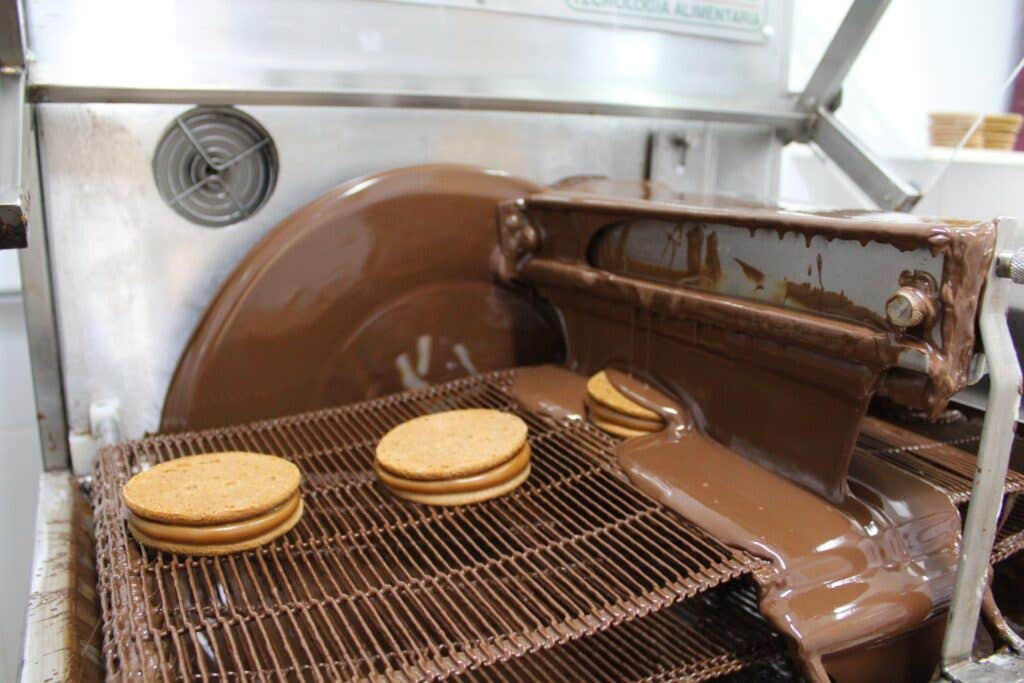
“Once my mom had perfected the recipe she handed it off to us and told us to get to work,” Di Meglio explains. “Her job is done. Now it’s up to me, my dad, and my brothers.” Initially, the family didn’t use cookie cutters and they dipped each alfajor by hand—hence the name: Malfatti translates to “poorly made” in Italian. “Nothing was uniform,” Di Meglio says, “but that was how we developed our reputation.”
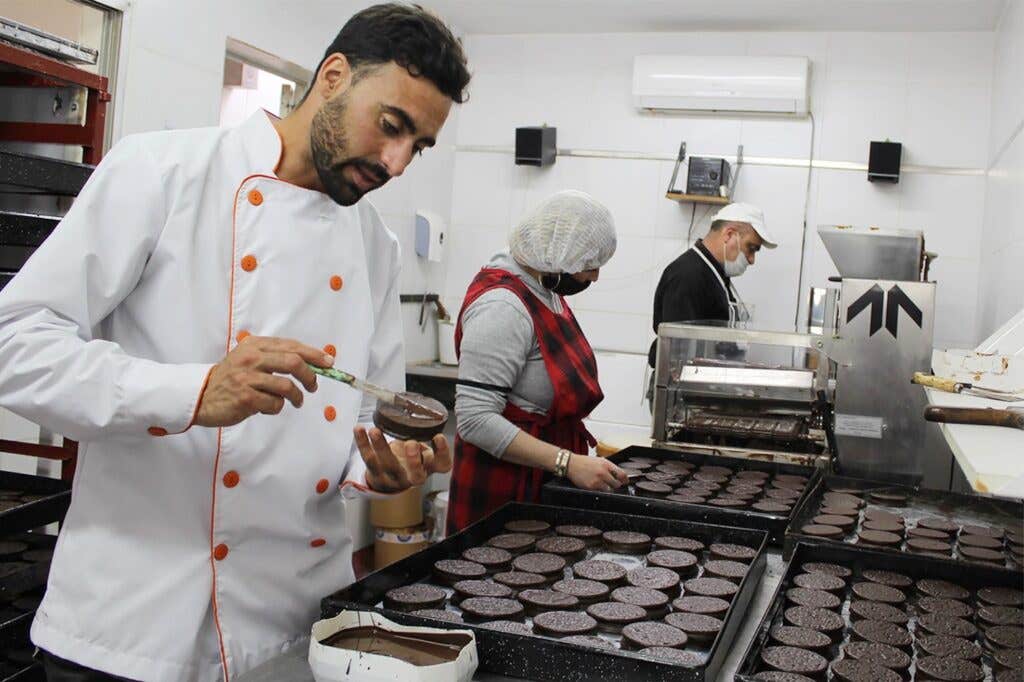
Business is now booming. Today, the Di Meglio family cycles through more than a ton of chocolate and dulce de leche each month; and now, they use machines to fill and enrobe each alfajor in a meticulous coat of chocolate. Di Meglio examines each one, smoothing any gaps with a butter knife, taking care to maintain an irregular, handmade aesthetic. “Some big company might look at these and say they are deformed,” Di Meglio comments. “But for us, they’re perfect.”
Recipes
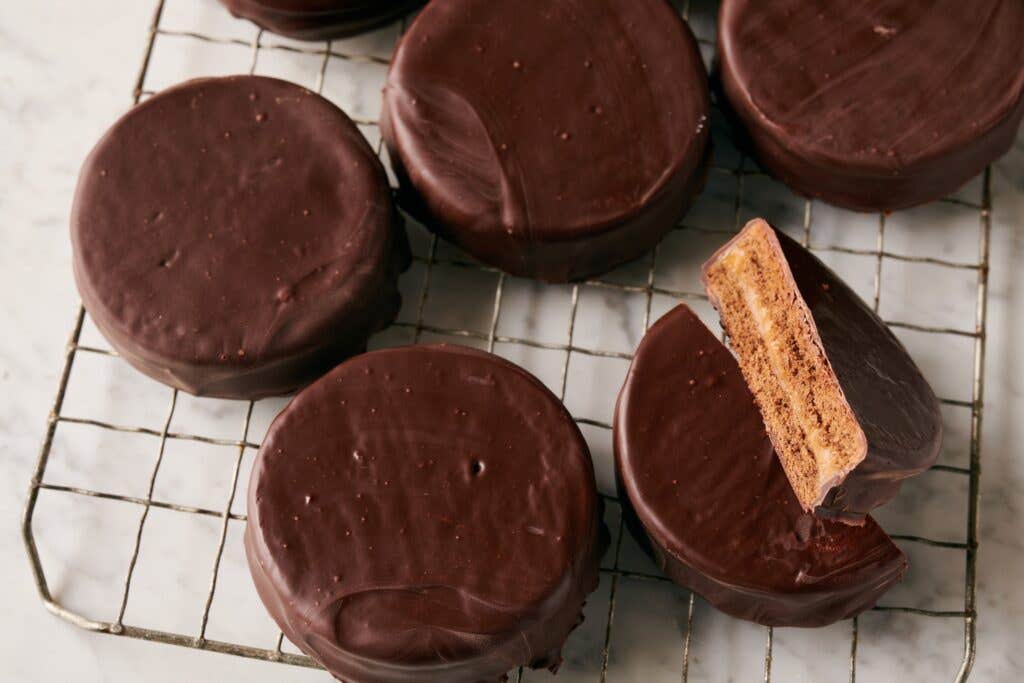
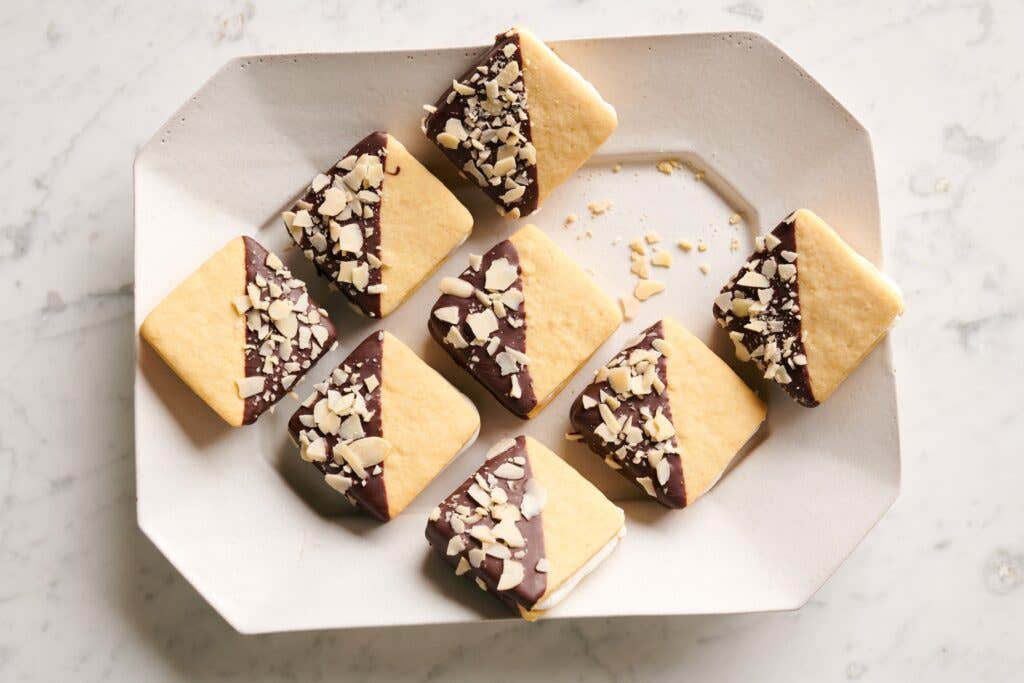
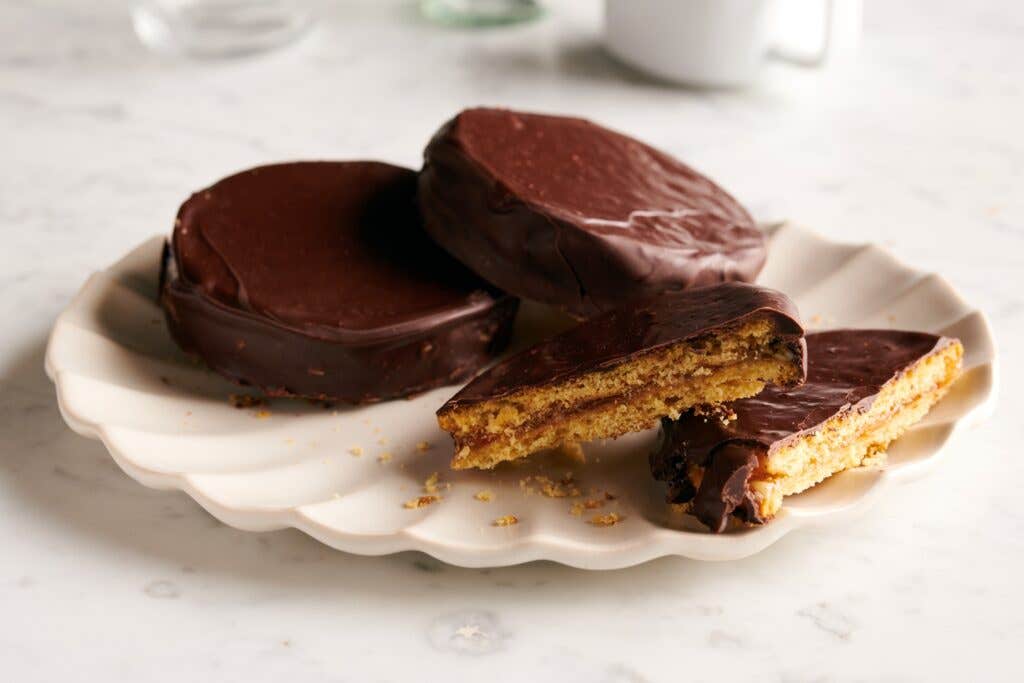

Keep Reading
Continue to Next Story










